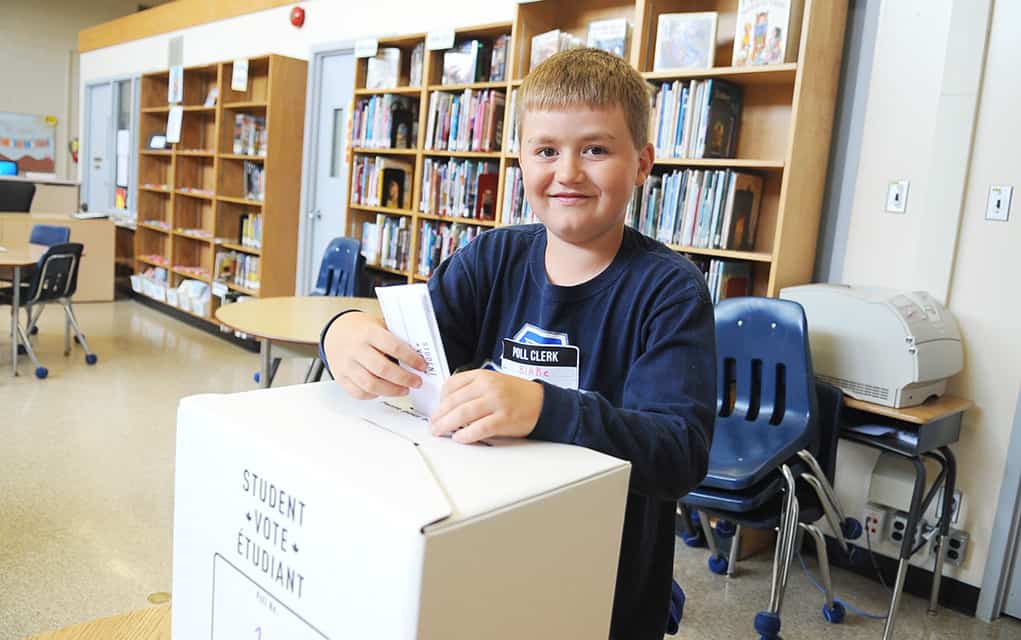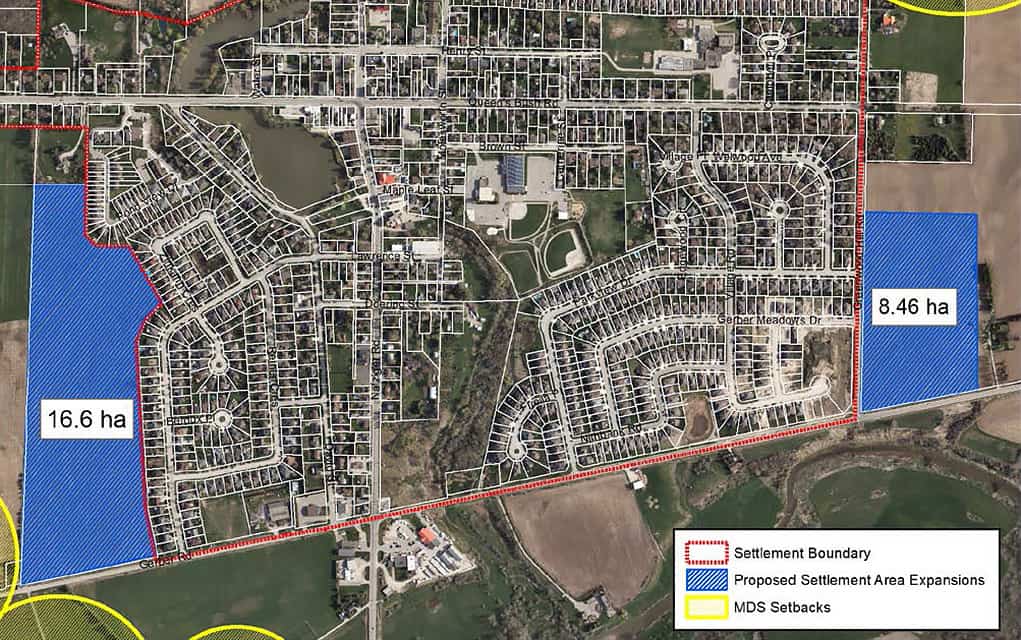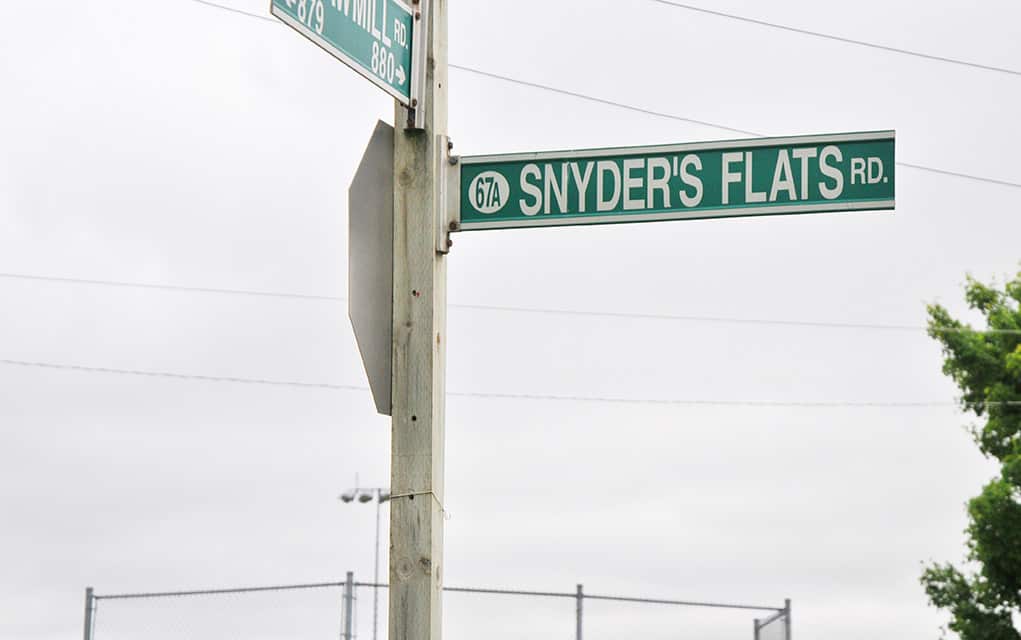While Ontarians of voting age were making their choices at polling stations, future voters were being introduced to the electoral process this week. The kids were casting their ballots through Student Vote, a parallel election that is being run in schools across the province.
Participating classrooms, including Grade 5 students of Linwood Public School, as well as the civics students at EDSS, will be going through the entire process, and casting a ballot for their preferred candidate in their riding. EDSS also opened the polls to the rest of the school, with volunteers manning the polling stations to assist their peers.
“As part of our Grade 5 social studies curriculum – which is government – we talk about rights and responsibilities and the levels of government, but we also talk about elections and voting,” explained Tanya Clarke, a Grade 5 teacher at Linwood PS who, along with fellow teacher Laura Lim, helped prepare the students.
“Student Vote is a way to actually make it real [for students]. We get ballots that have the candidates for our riding on it. We have voting screens and ballot boxes and the kids learn about all the roles on election day, and we hold a vote.”
For the EDSS students, many of them on the cusp of the legal voting age, taking part in the election and learning the issues is all the more relevant.
“I think it’s really important to vote. It’s very important to get involved in politics because if you don’t, then you’re just kind of ignoring one of the most important things about living in the area,” said EDSS student Jared Wallis, who cast his ballot on Tuesday.
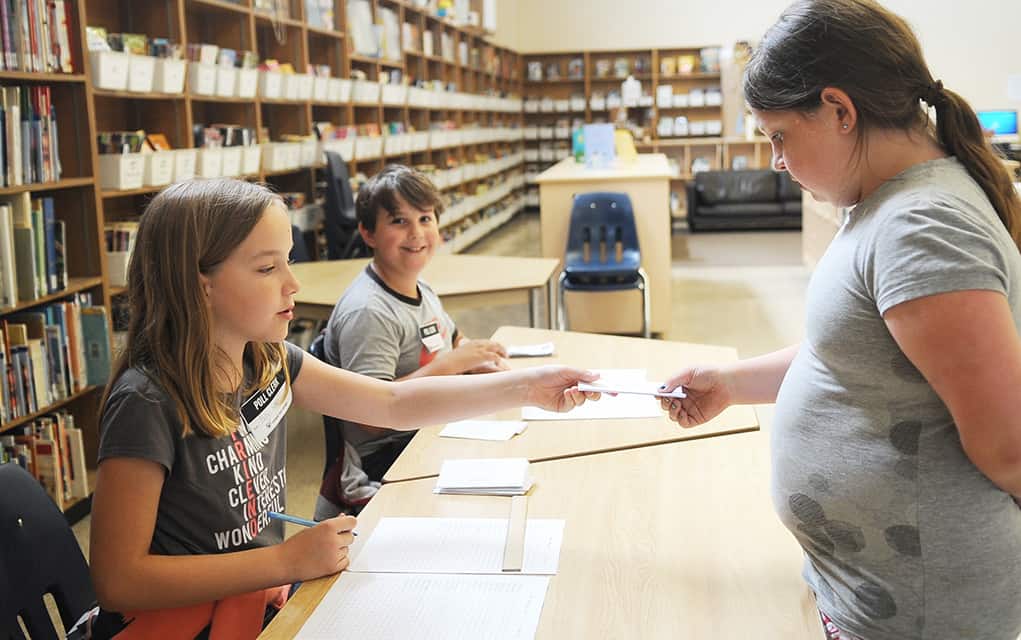
While the votes won’t be counted towards selecting the next provincial government, it can nonetheless send a powerful message. The ballots will all be tallied up province-wide by CIVIX, the organization behind Student Vote, and published on their website, giving people and politicians a look into what’s important to the next generation of voters.
It’s also an opportunity to instill the political instinct early on.
“Your vote is such a powerful piece of paper. It actually is such a powerful piece of paper, and people don’t realize that, I don’t think, at all,” observed EDSS student Liette Fife, commenting on the apathy people often feel towards the process.
In preparation for the mock-election, the young students at EDSS and Linwood had the opportunity to learn about the different political parties running in the Kitchener-Conestoga riding and familiarizing themselves with the issues. Considering it’s something even adults often struggle to do – turnout at the last general election was just 51 per cent – the exercise is all the more important to learn at an earlier age.
“We learned [about] the parties and what they’re wanting to do for the country,” said Grade 5 Linwood student Riley Paulitzki. “Like the NDP wanting to take away Grade 6 and Grade 3 [EQAO] testing. The Liberals wanting to provide more jobs.”
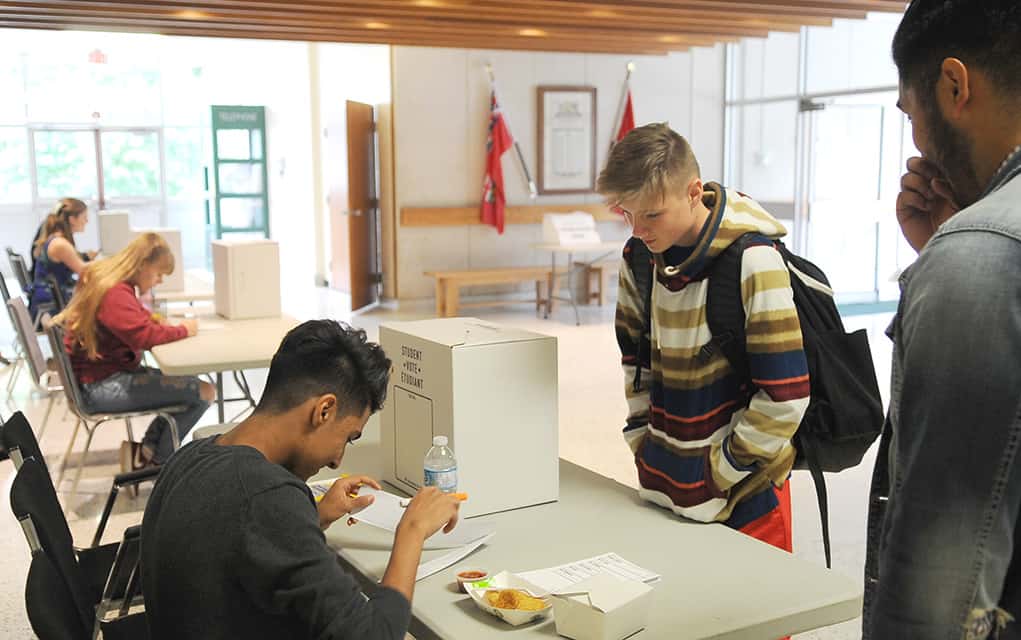
Asked what issues motivated them, the Grade 5 students point to education and healthcare as being two big ones. Unsurprisingly, many of the students were enamored with the NDP’s promise to end the Education Quality and Accountability Office (EQAO) testing required for all Grade 6 students in the province.
Health care, and especially the long wait-times at hospitals, was another issue many could relate to, with a few of the students noting their own experiences waiting long hours in the emergency room.
“That people are hiring more nurses and stuff,” said Ruby Rose, who was volunteering handing out ballots to the other students. “[Because] the wait times are so long.”
“And free education, so you don’t have to pay to go to school,” added Hunter Merchant.
“It’s interesting to hear what the kids think is important,” said their teacher Tanya Clarke.
“A lot of our discussion actually has been about trust and whether they can believe what the leaders are saying. The other thing the kids don’t like is when [politicians] don’t talk about what they believe but they spend all their time putting the other people down. In Grade 5, socially that’s kind of an interesting thing with a 10- and 11-year-old. They don’t like that they’re being mean to each other.”
The Student Vote elections ran between May 31 through to June 6, ending just one day before the June 7 election. The results of the vote will not be available until later tonight (Thursday).
In the 2014 general election, almost 170,000 students across Ontario participated in Student Vote. Province-wide, the Liberal party claimed the largest victory amongst the young voters, winning 62 seats. The NDP followed with 33, and the Conservatives at 11. In the Kitchener-Conestoga riding, it was the Liberal candidate, Wayne Wright, who was most popular amongst the students, winning 388 votes, followed by the actual winner Michael Harris with 283.


